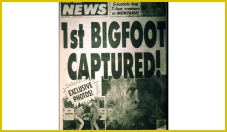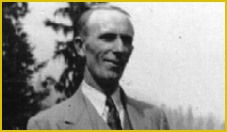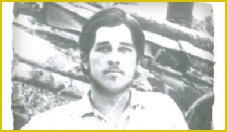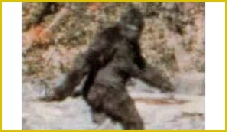












Last Gasps
Paranormal



The South’s science-based team!
Our trained investigators are here to believe you. Most importantly, we are here to solve the problem...no matter what it takes. Our services are always FREE.

© 2023 Last Gasps paranormal. Links | Terms and Conditions







Cryptids


Wouldn’t it be nice if there were unicorns or rivers of milk chocolate?
Unfortunately, as nice as those dreams may sound, they just can’t exist in the real world. Many of the myths and fables of our world fall into that category. As nice as they might sound, they just don’t exist.
Written by Kyle T. Cobb, Jr.
Nos tibi credere.
Phenomenon explored
In spite of the claims of many pop culture TV shows, many of the most popular cryptids of cryptozoologic fame are also just fantasies. The following is a brief survey of the beast as well as an limited explanation of just why they do not exist.
Just in the case that you don’t believe me, there is a wonderful book called “AMAZING SCIENCE” that will help to bring you into the light.
Bigfoot
(aka Sasquatch)
What is big and hairy and lives in the Pacific Northwest? My former roommate Chris Black.
While that answer may have eluded you almost any other answer than “Bigfoot” has a better chance of being more correct.
History
In trying to build a historical proof of the existence of the Sasquatches, many enthusiasts often cite the rich library of native American legends. Like other less developed tribes around the world, native American tribes often tell stories of wild men and ogre like demons. When taken radically out of contexts, the hairy, sharp clawed demon can easily become the hairy clawed Bigfoot. Without extensive academic research, the low information press (or Sasquatch hunter) would hardly be expected to know the difference. The fact that the demons are cannibals, often throw lightning and cause earthquakes is just plain ignored.
In the 1920s, a Chehalis Indian Reserve school teacher and government Indian agent named John W. Burns began collecting stories from tribes in near Harrison Hot Springs in British Colombia. For 3 years Burns gathered stories about encounters with hairy, savage giants. In 1929, Burns published his first Sasquatch stories in Maclean’s magazine. Naming the creatures “Sasquatch,” burns borrowed and corrupted the Chehalis language words meaning “hairy giant.”
Burns’ stories told of tall primitive men wielding knives, throwing stones and fighting with the Chehalis tribesmen. Not quite what modern Sasquatch hunters would expect. Even though burns wrote nearly 50 stories about the Sasquatch natives, by the stories were never considered more than an entertaining legend.
In 1957, the town of Harrison Hot Springs in Fraser Valley decided to revive the nearly forgotten legend of the Sasquatch by submitting a proposal for a grant of $600 CAD for the British Colombia centennial. While the proposal was rejected, the press picked up the story and within days the story was published in every major outlet in North America. Reporters descended on the town and the suddenly the idea of hunting Sasquatch appeared in papers as far away as India and New Zealand.
To further capitalize on the excitement, the British Columbia Centennial Committee offered $5,000 to anyone that could capture a “hairy man.”
Immediately a large number of expeditions set out to hunt the Sasquatch. With reporters in tow, there were minor disasters for the “would be” hunters everywhere. Even at this first event, there were admission by several of the hunters that they planned to fake finding a Sasquatch.
Just as the Sasquatch sensation was reaching a fevered level, staff reporter Don Lory wrote an article for the Province newspaper in Vancouver, BC April interviewing local outdoors man William Roe. According to the 23 April 1957 article entitled “Girl Sasquatch Sighted – Hunter Can’t Fire,” Roe claimed to have been hiking when he encountered a six-foot female, covered in dark brown, silver-tipped hair. While Roe had a .25 Remington rifle with him, he said the figure was so human that he couldn’t shoot it.
Suddenly, Sasquatch was no longer a giant Indian. It had become a large humanoid primate.
In 1958, the Sasquatch sensation changed its focus to America when Raymond Wallace, a road construction contractor and well known prankster, reported a number of giant footprints surrounding a construction site. For months, various sites under construction by Wallace reported Bigfoot prints. The stories filled the local papers. When the sheriff began to investigate, the prints moved just over the county line to another Wallace construction site. Throughout the 1960s Wallace continued to find Bigfoot prints and many local sighting had direct links to Wallace. After Wallace’s death, his family admitted to the pranking and even produced evidence in the form of one of the fake Bigfoot shoes.
For their part, Bigfoot hunters had already accepted the Wallace events as canon. Even though the fake Bigfoot shoes matched several of the casts of historic prints exactly, the hunters asserted since they didn’t match them all Wallace couldn’t possibly have more than one pair. Therefore, Bigfoot had to be real.
The rest of the history of Sasquatch sightings is dubious at best. Spectacular claims of captured Sasquatches and fraudulent claims filled the 1960s. The most famous is the highly disputed film by Robert Patterson and Bob Gimlin. Showing the Sasquatch strolling through a clearing, the film became the public face of Sasquatch while making a large sum of money for the hunters. In the years since film was made public, the authenticity of the film has been hotly contested. Perhaps the best guide to the credibility of the film is that Patterson was generally regarded as a showman, a con man and a liar.
Science
To date there has never been a verified body of a Sasquatch made public. Every single case of a “Sasquatch” body have been an artificial construct or simply a bear. Not a single bone has ever emerged. Even rare North American animals like the Wolverine periodically have their carcasses discovered by hunters or others exploring their terrain.
In virtually every case of DNA evidence, the DNA has been identified as coming from other known mammals. In the few cases that are not clearly from one mammals, it is often because the DNA samples have been deliberately contaminated with DNA from one or more other beast. The most celebrated recent case to announce the discovery of DNA was from a self-published “scientific” paper called DeNovo Scientific Journal. The lead author Melba Ketchum owned the publication and there is no evidence of peer review. Not surprising the Sasquatch journal was the only issue of this publication.
If the Sasquatch were to exist and were really 7 feet tall (or taller), then the caloric requirements would also be proportional. Assuming an equal mass to the height, without agriculture the feeding range of each creature would be 50 to 180 miles just to gather enough calories to survive. A tribe or clan of Sasquatch would need a far greater range.
For the Sasquatch to survive are a species, according to the theory of Minimum viable population, there would have to be a community of 500 to 1,000 if we ignore the impacts of inbreeding or genetic variability. With genetic factors included, based on historical data of real cases, a median MVP of 4,169 individuals is required to exist longer than 100 years without human intervention. Even the best lonely Sasquatch dating sites would having trouble with fewer than 4,000 Sasquatches left.
There simply are not a lot of places in the United States or Canada where 500 to 4000 Sasquatches could be living without frequent human detection. Just the food requirements and burial requirements alone would parallel a small town’s.
Besides with a population that size, some Congressman would already be lobbying for the vote of the Sasquatch Americans. At the very least, the Democrats would authorize a subsidy.


Example of Bigfoot news from the Weekly World newspaper



John Burns in 1940

William Roe at around age 30



Frame 352 from the Patterson-Gimlin film
| Paranormal Books |
| Apparitions |
| Cryptids |
| Demons |
| Orbs |
| Poltergiest |
| Residual Hauntings |
| Shadow People |
| West Demons |
| Ouija and Zozo |
| Exorcisms |
| Anneliese Michel |
| Ronald Hunkeler |
| Anna Ecklund |
| LaToya Ammons |
| George Lukins |
| Christian Demon texts |
| Roman Rite 1614 |
| Roman Rite 1998 |
| Eastern Demons |
| FAQ |